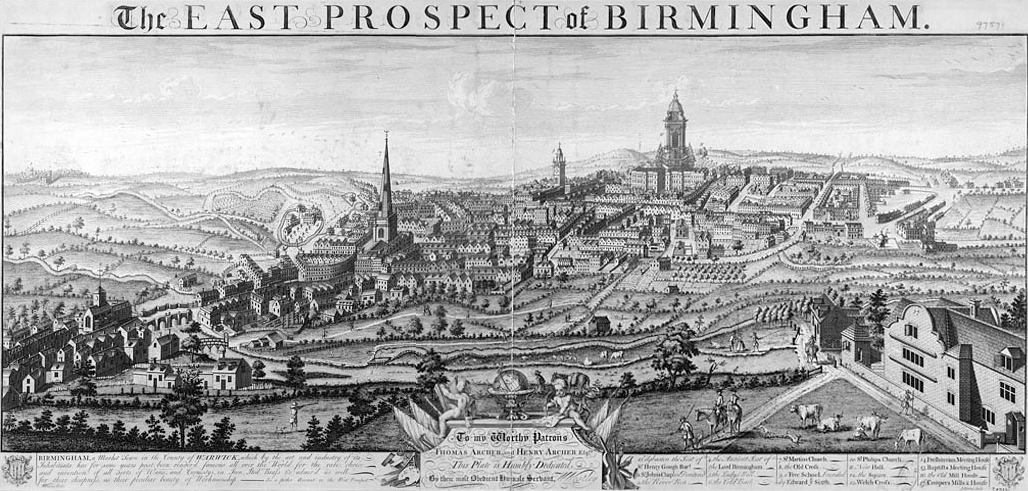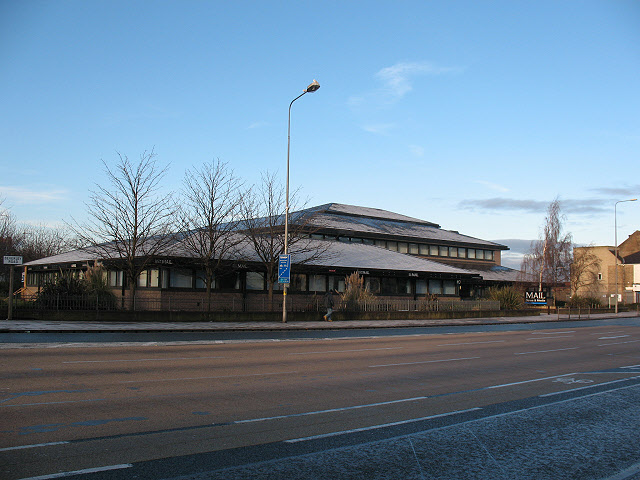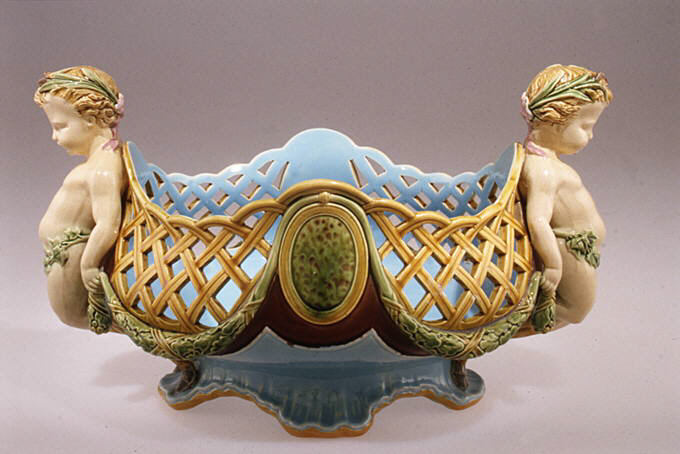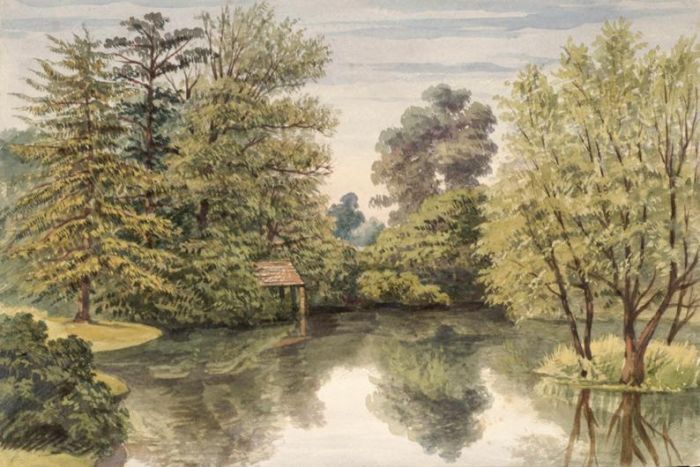|
St Martin In The Bull Ring
St Martin in the Bull Ring is a Church of England parish church in the city of Birmingham, West Midlands, England. It is the original parish church of Birmingham and stands between the Bull Ring Shopping Centre and the markets. The church is a Grade II* listed building. The current rector is Jeremy Allcock. History Original church The present Victorian church was built on the site of a 13th-century predecessor, which was documented in 1263. The church was enlarged in medieval times and the resulting structure consisted of a lofty nave and chancel, north and south aisles and a northwest tower with spire. Although no record indicates when the first clock appeared in Birmingham, in 1547 the King's Commissioners reported that the Guild of the Holy Cross were responsible "for keeping the Clocke and the Chyme" at a cost of four shillings and four pence a year at St Martin's Church. The next recorded mention of a clock is in 1613. The earliest known clock makers in the town arr ... [...More Info...] [...Related Items...] OR: [Wikipedia] [Google] [Baidu] |
Birmingham
Birmingham ( ) is a City status in the United Kingdom, city and metropolitan borough in the metropolitan county of West Midlands (county), West Midlands, within the wider West Midlands (region), West Midlands region, in England. It is the List of English districts by population, largest local authority district in England by population and the second-largest city in Britain – commonly referred to as the second city of the United Kingdom – with a population of million people in the city proper in . Birmingham borders the Black Country to its west and, together with the city of Wolverhampton and towns including Dudley and Solihull, forms the West Midlands conurbation. The royal town of Sutton Coldfield is incorporated within the city limits to the northeast. The urban area has a population of 2.65million. Located in the West Midlands (region), West Midlands region of England, Birmingham is considered to be the social, cultural, financial and commercial centre of the Midland ... [...More Info...] [...Related Items...] OR: [Wikipedia] [Google] [Baidu] |
Guild Of The Holy Cross (Birmingham)
The Guild or Gild of the Holy Cross was a medieval religious guild in Birmingham, England. It was founded in 1392 by three burgesses of the town – John Coleshill, John Goldsmith and William atte Slowe – in place of an attempt to found a chantry in the parish church of St Martin in the Bull Ring, that had been licensed ten years earlier but never came into effect. The Guild had several roles within the town. The majority of its income was spent maintaining priests and a chantry at St Martin's, but it also maintained almshouses, roads and the bridge over the River Rea at Deritend. Its hall on New Street provided a social focus for the town, with feasting and the provision of a clock, chimes and a bell turret It had a number of paid officials including a warden, a clerk, an organist, a keeper of the hall and gardens, a midwife and a bellman – one of whose jobs was to announce when the spit ceased to turn at feasts. These officials had a high degree of status within the t ... [...More Info...] [...Related Items...] OR: [Wikipedia] [Google] [Baidu] |
Edward Burne-Jones
Sir Edward Coley Burne-Jones, 1st Baronet, (; 28 August 183317 June 1898) was an English painter and designer associated with the Pre-Raphaelite Brotherhood's style and subject matter. Burne-Jones worked with William Morris as a founding partner in Morris & Co., Morris, Marshall, Faulkner & Co in the design of decorative arts. His early paintings show the influence of Dante Gabriel Rossetti, but by 1870 he had developed his own style. In 1877, he exhibited eight oil paintings at the Grosvenor Gallery, a new rival to the Royal Academy of Arts. These included ''The Beguiling of Merlin''. The timing was right and he was taken up as a herald and star of the new Aesthetic Movement. In the studio of Morris and Co. Burne-Jones worked as a designer of a wide range of crafts including ceramic tiles, jewellery, tapestry, tapestries, and mosaics. Among his most significant and lasting designs are those for stained glass windows the production of which was a revived craft during the 19th ... [...More Info...] [...Related Items...] OR: [Wikipedia] [Google] [Baidu] |
Hull Daily Mail
The ''Hull Daily Mail'' is an English regional daily newspaper for Kingston upon Hull, in the East Riding of Yorkshire. The ''Hull Daily Mail'' has been circulated in various guises since 1885. A second edition, the ''East Riding Mail'', covers East Yorkshire outside the city of Hull. The paper publishes everyday except Sunday. The paper is published by Mail News & Media. Mail News & Media also publishes two free weekly newspapers, the ''Hull Advertiser'' and ''Beverley Advertiser'', and a monthly magazine, ''The Journal''. In 2012, Local World acquired owner Northcliffe Media from Daily Mail and General Trust. Trinity Mirror purchased Local World in 2015, and is now known as Reach plc. History The origins of the Hull Daily Mail can be traced back to the ''Hull Packet and Humber Gazette'', a weekly newspaper established on 29 May 1787 that was printed on Scale Lane, a street in what is today part of Hull's Old Town. Its name was shortened to ''The Hull Packet'' in 1788. It wa ... [...More Info...] [...Related Items...] OR: [Wikipedia] [Google] [Baidu] |
Jacqueline Stieger
Jacqueline A. N. Stieger (born 1936) is a British artist and sculptor who primarily works in cast metal, creating jewellery and medals as well as larger sculptures. She has executed architectural commissions for churches and chapels in the UK, France and Switzerland (some jointly with her husband, Alfred Gruber, who died in 1972). She is also known for her medals, both innovative art medals and conventional commemorative examples. Biography Stieger was born in 1936 in Wimbledon, London, Wimbledon, London, where her Swiss parents, Trudy and General Aircraft Monospar, Helmuth John ("Mudi") Stieger, were attending university. Her father was an aeronautical engineer who invented the monospar wing. She had a sister, Marion. The family soon moved to the East Riding of Yorkshire, East Riding of Yorkshire, where her father headed R&D at Blackburn Aircraft in Brough, East Riding of Yorkshire, Brough. He later became vice-chair of Northern Dairies. She was educated at the Bedales boarding s ... [...More Info...] [...Related Items...] OR: [Wikipedia] [Google] [Baidu] |
Baptismal Font
A baptismal font is an Church architecture, ecclesiastical architectural element, which serves as a receptacle for baptismal water used for baptism, as a part of Christian initiation for both rites of Infant baptism, infant and Believer's baptism, adult baptism. Aspersion and affusion fonts The earliest western fonts are found in the Catacombs of Rome. The fonts of many western Christian denominations that practice infant baptism are designed for baptisms using a non-immersive method, such as aspersion (sprinkling) or affusion (pouring). The simplest of these fonts has a pedestal with a holder for a basin of water. The materials vary greatly, consisting of carved and sculpted stone (including marble), wood, or metal in different shapes. Many fonts are in Octagon, octagonal shape, as a reminder of the new creation and as a connection to the Old Testament practice of circumcision, which traditionally occurs on the eighth day. Some fonts are three-sided as a reminder of the Holy T ... [...More Info...] [...Related Items...] OR: [Wikipedia] [Google] [Baidu] |
De Bermingham
The de Birmingham family (or de Bermingham) held the lordship of the manor of Birmingham in England for four hundred years and managed its growth from a small village into a thriving market town. They also assisted in the invasion of Ireland and were rewarded with the Barony of Athenry. They were stripped of most of their lands in England by the notorious John Dudley, Duke of Northumberland, who held sway over the young King Edward VI (1547–1553). Ansculf Following the Norman Conquest of 1066, the Norman soldier Ansculf de Picquigny (or Ausculph de Penchengi, etc.) was granted many manors in the county of Warwickshire, and elsewhere, centred upon Dudley Castle. The historian Sir iden ... [...More Info...] [...Related Items...] OR: [Wikipedia] [Google] [Baidu] |
Mintons
Mintons was a major company in Staffordshire pottery, "Europe's leading ceramic factory during the Victorian era", an independent business from 1793 to 1968. It was a leader in ceramic design, working in a number of different ceramic bodies, decorative techniques, and "a glorious pot-pourri of styles - Rococo shapes with Oriental motifs, Classical shapes with Medieval designs and Art Nouveau borders were among the many wonderful concoctions". As well as pottery vessels and sculptures, the firm was a leading manufacturer of tiles and other architectural ceramics, producing work for both the Palace of Westminster, Houses of Parliament and United States Capitol. The family continued to control the business until the mid-20th century. Mintons had the usual Staffordshire variety of company and trading names over the years, and the products of all periods are generally referred to as either "Minton", as in "Minton china", or "Mintons", the mark used on many. Mintons Ltd was the co ... [...More Info...] [...Related Items...] OR: [Wikipedia] [Google] [Baidu] |
Westminster Hall
Westminster Hall is a medieval great hall which is part of the Palace of Westminster in London, England. It was erected in 1097 for William II (William Rufus), at which point it was the largest hall in Europe. The building has had various functions over the years, including being used for judicial purposes from the twelfth to the nineteenth centuries. When a joint address is given to the two chambers of the UK Parliament, the House of Commons and House of Lords, the hall is on rare occasions the venue. It is also used for special addresses by Parliament to the Monarch. It was used to host coronation banquets until 1821, and since the twentieth century has been the usual venue for the lyings in state of state and ceremonial funerals. The fabric of the hall is particularly notable for its hammerbeam roof, a form typical of English Gothic architecture which uses horizontal trusses to span large distances. The roof was commissioned for Richard II in 1393 and built by the royal ... [...More Info...] [...Related Items...] OR: [Wikipedia] [Google] [Baidu] |
Grinshill
Grinshill is a small village, and civil parish in Shropshire, England, United Kingdom. The parish is one of the smallest in the district. The population of the civil parish at the 2011 census was 274. Grinshill Hill rises above the village to above sea level. Grinshill is near (east) to the village of Clive. The A49 runs just further to the east of the village. The nearest railway station is at Yorton, a mile or so to the west. Stone has been quarried at Grinshill since at least the twelfth century. Grinshill stone is a Triassic sandstone that was described by the Pevsner Architectural Guides as the "pre-eminent" building stone of Shropshire, and has been used in buildings as varied as Haughmond Abbey, Shrewsbury railway station and Welsh Bridge. Most notably, Grinshill stone has been used to make the lintels and door surround of Number 10 Downing Street and in the building of Chequers. The village church is All Saints. Nearby is a mansion, Stone Grange, built in 1617 as ... [...More Info...] [...Related Items...] OR: [Wikipedia] [Google] [Baidu] |
Allen Edward Everitt
Allen Edward Everitt (10 April 1824 – 11 June 1882) was an English architectural artist and illustrator. He was a leading artist in the Birmingham area between 1850 and 1880, and his work is a valuable historical record of local buildings of that period. Life and work Everitt was born at 59 Newhall Street, Birmingham, the son of Edward Everitt, an art dealer, and grandson of Allen Everitt, a well-known local artist and art teacher. His maternal grandfather was David Parkes, the Shropshire antiquarian. He showed an early talent for art and received lessons from David Cox, with whom he remained a friend. His specialty was drawing old buildings and their interiors. Taking Birmingham as a centre he made careful drawings of almost every spot in the Midlands of archaeological or historical interest. Between the ages of thirty and forty, he made painting tours of Belgium, France and Germany. After this, he devoted himself particularly to building interiors, his work being mainly c ... [...More Info...] [...Related Items...] OR: [Wikipedia] [Google] [Baidu] |
John Thackray Bunce
John Thackray Bunce (11 April 1828 – 28 June 1899) was a British journalist and writer. He served as editor of '' Aris's Birmingham Gazette'' from 1860 to 1862, and of the ''Birmingham Post'' from 1862 to 1898. Early years Bunce was born in Faringdon, Berkshire, to John Bunce, watchmaker and silversmith, and his wife, Mary, née Clapham. Mary's mother's maiden name had been Thackray. The family moved to Birmingham when Bunce was nine and he attended Gem Street elementary branch school, operated by the Foundation of the Schools of King Edward VI. Journalism Aged 14, Bunce left school and began work as a printer's apprentice with the '' Midland Counties Herald'', a newspaper. He was given a job as a reporter after writing a letter, anonymously, calling for Birmingham to have an art gallery. He left the ''Herald'' in 1852 to work for another Birmingham paper, '' Aris's Birmingham Gazette'', and was promoted as its editor in 1860. The ''Gazette'' followed a tory line and ... [...More Info...] [...Related Items...] OR: [Wikipedia] [Google] [Baidu] |








